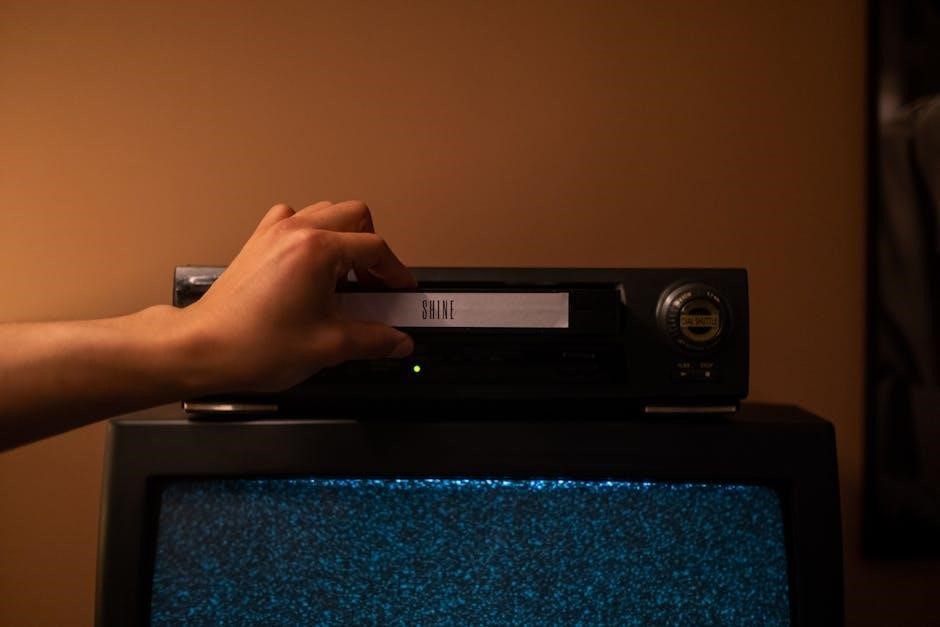Sony STR-DH750 Manual: A Comprehensive Guide
This comprehensive guide is designed to help you navigate the features and functions of your Sony STR-DH750 receiver. Whether you’re a new owner or seeking to optimize your setup, this manual provides detailed instructions.
The Sony STR-DH750 is a multi-channel AV receiver designed to enhance your home theater experience. This guide will walk you through the various aspects of the receiver, from initial setup to advanced features. The STR-DH750 offers a range of functionalities, including support for various audio and video formats, Bluetooth connectivity (on the STR-DH750 model only), and multiple input/output options. We’ll explore how to connect your devices, configure speaker settings, and optimize the sound to your liking. This guide uses the STR-DH750 for illustration unless indicated. You’ll learn to play content from USB devices and the radio.
Preparation and Initial Setup
Before diving into the advanced features, let’s cover the essential steps. This section guides you through unpacking, connecting your devices, and performing the initial setup for optimal performance, according to the official manual.
Supplied Accessories
Upon opening the box of your Sony STR-DH750, it’s important to verify that all the necessary accessories are present. This ensures a smooth setup and optimal functionality. The standard package includes the remote control (RM-AAU190), which is essential for navigating the receiver’s menu and settings. Additionally, you should find an FM wire antenna for radio reception and an AM loop antenna.
Make sure to locate the AC power cord, which is required to power the receiver. The specific components included may vary slightly depending on your region of purchase. Consult the included documentation for a detailed list tailored to your location. Verify these items before proceeding with the setup. Contact your retailer if any components are missing.
Connecting Audio-Visual Devices
Connecting your audio-visual devices to the Sony STR-DH750 involves several options, primarily utilizing HDMI connections for optimal audio and video quality. Locate the HDMI inputs on the rear panel of the receiver and connect your devices such as Blu-ray players, gaming consoles, and media streamers. For older devices without HDMI, component or composite video inputs are available.
For audio, use optical or coaxial digital audio cables, or RCA analog audio cables. Ensure you match the input labels on the receiver to the corresponding outputs on your devices. Connect your TV to the HDMI output labeled “ARC” (Audio Return Channel) to enable audio from the TV to be sent back to the receiver. Secure all connections properly.
Initial Setup via Easy Setup
The Sony STR-DH750 offers an “Easy Setup” feature to simplify the initial configuration process. After connecting your devices and turning on the receiver, navigate to the “Easy Setup” option in the menu. This feature guides you through essential settings, such as speaker configuration, input assignments, and network settings.
Follow the on-screen prompts, using the remote control to make selections. The setup will ask about your speaker layout (e.g., 5.1, 7.2) and may include an auto-calibration process using a supplied microphone. This process optimizes the sound based on your room’s acoustics. Completing “Easy Setup” ensures your receiver is ready for basic operations.

Basic Operations and Playback
This section covers the fundamental operations of the Sony STR-DH750, including enjoying video and sound from connected devices, playing content from USB devices, and listening to the radio.
Enjoying Video and Sound
Once your devices are connected, you can begin enjoying video and sound through your Sony STR-DH750. To do this, select the appropriate input source on the receiver that corresponds to the device you wish to use. This can be done using the input selector on the front panel or the remote control.
Ensure that the selected device is powered on and playing content. The receiver will then process the audio and video signals, sending the audio to your connected speakers and the video to your television or projector. You can adjust the volume and sound settings to your preference using the receiver’s controls. Experiment with different sound fields for an enhanced experience.
Playing Content from USB Devices
The Sony STR-DH750 allows you to enjoy audio content directly from USB devices. To begin, connect your USB storage device to the USB port located on the front of the receiver. Ensure that the USB device contains compatible audio files, such as MP3, WMA, or AAC.
Once connected, use the receiver’s remote control to navigate to the “USB” input source. The receiver will then scan the USB device for compatible files and display them on your connected TV screen. You can then browse through folders and select the desired audio tracks for playback. Use the playback controls to play, pause, skip tracks, and adjust the volume. Remember to safely eject the USB device.
Listening to the Radio
The Sony STR-DH750 allows you to enjoy both FM and AM radio broadcasts. To begin, connect the included FM and AM antennas to the appropriate terminals on the rear panel of the receiver. Extend the FM antenna for optimal reception. Next, press the “TUNER” button on the receiver or remote control to select the tuner function.
Use the “TUNING +” and “TUNING -” buttons to manually scan for radio stations. Alternatively, you can use the “AUTO TUNING” function to automatically search for and store available stations. To save your favorite stations, tune to the desired station and press the “MEMORY” button, then select a preset number using the number buttons. You can also directly tune to a station by entering its frequency using the number buttons.

Bluetooth Features (STR-DH750 Only)
The STR-DH750 receiver includes Bluetooth connectivity, enabling you to wirelessly stream audio from compatible devices. Explore how to pair your devices, play music, and control the receiver via Bluetooth.
Enjoying Audio Content via Bluetooth
To enjoy audio content via Bluetooth on your STR-DH750, first ensure the Bluetooth function is enabled. Navigate to the settings menu and verify that “BT Power” is set to “On.” Next, pair your Bluetooth device with the receiver. Access your device’s Bluetooth settings, search for available devices, and select “STR-DH750” from the list. You may be prompted to enter a pairing code, typically “0000.”
Once paired, select the Bluetooth input on your receiver. You can now play audio from your paired device, and it will be wirelessly transmitted to your STR-DH750. Control playback using your device or the receiver’s remote.
Controlling the Receiver with SongPal
The SongPal app (now known as Music Center) allows you to control your STR-DH750 receiver using your smartphone or tablet. First, download and install the Music Center app from your device’s app store. Ensure your mobile device and the receiver are connected to the same Wi-Fi network. Launch the Music Center app and it will automatically search for compatible devices on your network.
Select your STR-DH750 from the list of available devices. Within the app, you can control various receiver functions, including input selection, volume adjustment, sound settings, and more. This provides a convenient and intuitive way to manage your home theater system.

Adjusting Settings and Other Features
Customize your listening experience with various settings on the STR-DH750. From speaker configurations to sleep timers, this section guides you through the available options to optimize the receiver to your needs.
Configuring Speaker Settings
Proper speaker configuration is crucial for optimal audio performance. The STR-DH750 allows you to tailor the sound output to match your specific speaker setup and room acoustics. This involves specifying the size and type of each speaker, as well as their distance from the listening position.
The receiver also supports bi-amplifier connections for compatible front speakers, enhancing sound clarity and detail. Furthermore, you can use the auto-calibration feature to automatically adjust speaker settings based on room measurements, ensuring balanced and immersive sound. Fine-tune the settings manually for personalized audio.
By using speaker configurations you are optimising the sound that comes out of your Sony STR-DH750.
Using the Sleep Timer
The sleep timer feature allows you to set a specific duration after which the receiver will automatically power off. This is particularly useful when listening to music or watching a movie before going to sleep, as it prevents the receiver from running unnecessarily throughout the night.
You can select from various time intervals, such as 30, 60, 90, or 120 minutes, depending on your preference. The sleep timer can be easily activated and deactivated through the receiver’s menu or remote control. This helps save energy and ensures a restful sleep without having to manually turn off the device.
The STR-DH750 sleep timer will turn off at the specified time, and can be turned off at any time.
Reverting to Factory Default Settings
Performing a factory reset on your Sony STR-DH750 receiver can resolve various issues by restoring the device to its original settings. This process erases all customized configurations, including speaker settings, input assignments, and network configurations.
Before initiating a factory reset, ensure to back up any important settings you wish to retain. To perform the reset, navigate to the system settings menu on the receiver. Select the “Factory Reset” or “Initialize” option and confirm your decision. The receiver will then restart, and all settings will be reverted to their default values, as if the unit was new.
Note that all settings will be erased, so make sure to write down the ones you want to restore.

Troubleshooting
Encountering issues with your STR-DH750? This section provides solutions to common problems. From error messages to audio and video issues, find guidance to resolve them and optimize your receiver’s performance.
Common Error Messages
When operating the Sony STR-DH750, you might encounter specific error messages. Understanding these messages is crucial for diagnosing and resolving issues effectively. This section outlines common error messages, their potential causes, and troubleshooting steps; For instance, an error related to “HDMI connection” might indicate a loose cable or an incompatible device setting. Another common issue could be related to speaker configuration, which might trigger an error if the impedance isn’t correctly set. It’s important to consult this section if you face unexpected alerts on your receiver’s display. Addressing these errors promptly ensures optimal performance and prevents potential damage to your system. Each described error message will be accompanied by a recommended course of action to help you quickly restore functionality.
